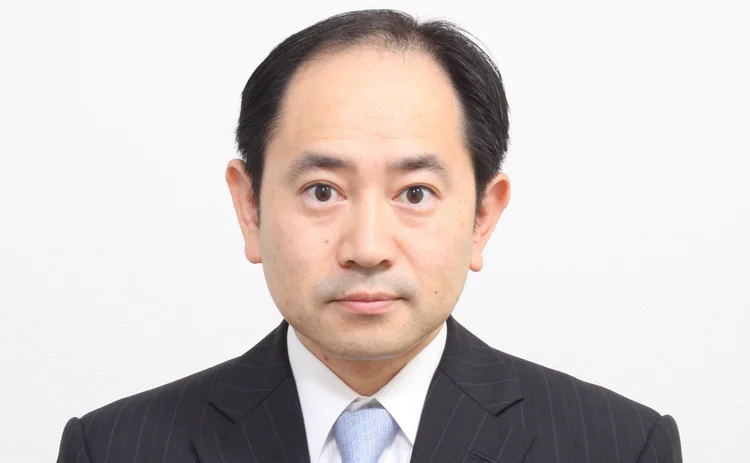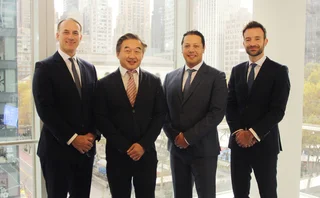
Clearing house of the year: JSCC
Asia Risk Awards 2019

In the not-too-distant past there was a quite sizeable gulf in the cost of clearing interest rate swaps in the yen market’s two clearing houses. Not any longer.
On August 8 last year, the basis on a 20-year yen swap between the Japan Securities Clearing Corporation and its rival LCH stood at 10.9 basis points. One year later, the gap is close to zero. That, dealers say, is a reflection of JSCC’s success in attracting foreign firms through client clearing – a reason many see them as worthy winners of Asia’s clearing house of the year.
“They are internationalising, and onboarding a lot of European firms through client clearing. As a result of that the basis between JSCC and LCH has shrunk,” says a clearing and collateral manager for a global bank based in Tokyo. “It is all because of liquidity – most of the liquidity in the yen market is at JSCC, and so that is where people want to clear.”
The yen rates market has traditionally been dominated by Japanese banks looking to hedge their loan books with fixed receiver swaps, which previously gave the CCP a highly directional book. That meant dealers could often only find counterparties willing to pay fixed at LCH, thereby duplicating their margin requirements, something that is reflected in swap prices at the two CCPs.
As European buy-side firms have begun to flock to JSCC in 2018, JSCC’s book became less directional, leading to a dramatic narrowing in the basis. JSCC figures show the number of non-Japanese firms accessing the clearing house through client clearing now stands at 21, up from eight at the end of 2017.
A number of service improvements introduced at the CCP in the past year have helped to smooth the way for those foreign firms looking to access that deeper pool of liquidity for yen swaps.
In December 2018, for example, JSCC introduced an English language version of its interest rate swap clearing brokerage agreement, which is used by clearing brokers and their clients. Three months prior to that – in September – the CCP launched an in-house multilateral compression service for interest rate swaps. By stripping out the cost of third-party vendor fees, the CCP hopes the service will eventually lead to great compression.
Takehiro Hosomura, the executive officer in charge of clearing planning and OTC derivatives clearing services at JSCC in Tokyo, says such enhancements, along with greater swap liquidity, have helped to boost non-Japanese participation at the CCP. Comments made last year by Christopher Giancarlo, who was then the chairman of the Commodity Futures Trading Commission in the US, played an additional role in broadening such participation at the clearing house, he says. It was in London on September 4 last year that Giancarlo for the first time suggested that US clients would be able to clear swaps on non-US CCPs that aren’t fully registered with the regulator, provided they have comparable supervision.
We continue to have dialogues with our members and continuously enhance our services, and we are seeing a lot of interest from offshore investors to join at JSCC. JSCC has the largest pool of liquidity for Japanese yen interest rate swaps, which also makes it attractive to clear here
Takehiro Hosomura, JSCC
“We continue to have dialogues with our members and continuously enhance our services, and we are seeing a lot of interest from offshore investors to join at JSCC,” says Hosomura. “JSCC has the largest pool of liquidity for Japanese yen interest rate swaps, which also makes it attractive to clear here.”
Helping CVA hedgers
The CCP is also working to help Japanese banks tackle one of the biggest challenges they have faced in recent years: the implementation of accounting credit valuation adjustments (CVA) for derivatives.
This is largely in response to increased demand from its Japanese megabank members for single-name credit default swaps due to their need to hedge the profit & loss (P&L) impact of CVA. Mizuho, SMBC Bank and Mitsubishi UFJ began to reflect the value of counterparty credit risk in their derivatives portfolios in 2018, and have established desks to hedge the volatility that the adjustment creates on their P&L.
The annual volume single-name CDS cleared at JSCC climbed by roughly 40% in 2018 against the previous year, hitting ¥1.29 trillion ($137 billion) in notional by the year end. As Risk.net reported in June, a large part of that is coming from cleared CDS referencing one name: Softbank.
However, there is now undoubtedly a growing demand for CDS at JSCC due to the introduction of accounting CVA at the Japanese megabanks. A director of a recently established XVA desk at one of the banks says they have been clearing all of their CDS trades at JSCC over the past three months.
“We are probably the biggest player in this market and all of our CDS trades are cleared at the JSCC,” he says. “I think they are doing very well. For us there are no issues, no stress.”
Overall single-name CDSs in Japan are notoriously illiquid, but Hosomura believes the addition of 13 more names at JSCC in October 2018 will over time contribute to improved liquidity in the market.
“Japanese banks introducing CVA liquidity in the Japanese CDS market is going to be very important,” says Hosomura. “Index clearing volume has almost tripled in the second quarter compared to the last year. Further, the Japanese megabanks asked JSCC to expand the number of eligible single-names, which they need for their CDS hedges. As this will encourage participation in CDS in the Japanese market, we have high expectations that liquidity will build over the coming year.”
Only users who have a paid subscription or are part of a corporate subscription are able to print or copy content.
To access these options, along with all other subscription benefits, please contact info@risk.net or view our subscription options here: http://subscriptions.risk.net/subscribe
You are currently unable to print this content. Please contact info@risk.net to find out more.
You are currently unable to copy this content. Please contact info@risk.net to find out more.
Copyright Infopro Digital Limited. All rights reserved.
As outlined in our terms and conditions, https://www.infopro-digital.com/terms-and-conditions/subscriptions/ (point 2.4), printing is limited to a single copy.
If you would like to purchase additional rights please email info@risk.net
Copyright Infopro Digital Limited. All rights reserved.
You may share this content using our article tools. As outlined in our terms and conditions, https://www.infopro-digital.com/terms-and-conditions/subscriptions/ (clause 2.4), an Authorised User may only make one copy of the materials for their own personal use. You must also comply with the restrictions in clause 2.5.
If you would like to purchase additional rights please email info@risk.net
More on Awards
Clearing house of the year: LCH
Risk Awards 2025: LCH outshines rivals in its commitment to innovation and co-operation with clearing members
Best use of machine learning/AI: CompatibL
CompatibL’s groundbreaking use of LLMs for automated trade entry earned the Best use of machine learning/AI award at the 2025 Risk Markets Technology Awards, redefining speed and reliability in what-if analytics
Markets Technology Awards 2025 winners’ review
Vendors jockeying for position in this year’s MTAs, as banks and regulators take aim at counterparty blind spots
Equity derivatives house of the year: Bank of America
Risk Awards 2025: Bank gains plaudits – and profits – with enhanced product range, including new variants of short-vol structures and equity dispersion
Law firm of the year: Linklaters
Risk Awards 2025: Law firm’s work helped buttress markets for credit derivatives, clearing and digital assets
Derivatives house of the year: UBS
Risk Awards 2025: Mega-merger expected to add $1 billion to markets revenues, via 30 integration projects
Interest rate derivatives house of the year: JP Morgan
Risk Awards 2025: Steepener hedges and Spire novations helped clients navigate shifting rates regime
Currency derivatives house of the year: UBS
Risk Awards 2025: Access to wealth management client base helped Swiss bank to recycle volatility and provide accurate pricing for a range of FX structures







